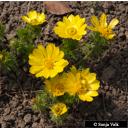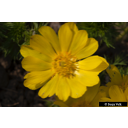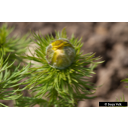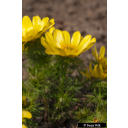Useful information about the taxon (species, subspecies, variety...)
Adonis vernalis L. 1753
Ranunculaceae
(APG IV)Taxon concept: The Plant List (2010)
Adonis vernalis L. - Accepted: Adonis vernalis L. bei Zander 2008; Familie: Ranunculaceae (Zander 2008)Adonis vernalis L. - Accepted: Adonis vernalis L. bei Oberdorfer 2001; Familie: Ranunculaceae (APG III)Adonis vernalis L. - Accepted: Adonis vernalis L. bei The Plant List (2010); Familie: Ranunculaceae (APG III)Adonis vernalis L. - Accepted: Adonis vernalis L. bei The Plant List (2014), version 1.1; Familie: Ranunculaceae (APG III)Adonis vernalis L. - Accepted: Adonis vernalis L. bei The Plant List (2014), version 1.1; Familie: Ranunculaceae (APG IV)Adonis vernalis L. - Accepted: Adonis vernalis L. bei Zander 2008; Familie: Ranunculaceae (APG IV)Adonis vernalis L. - Accepted: Adonis vernalis L. bei BfN Checklist Flora DE; Familie: Ranunculaceae (APG IV)Adonis vernalis L. - Accepted: Adonis vernalis L. bei World Flora Online - APG IV (Angiosperms); Familie: Ranunculaceae (World Flora Online - APG IV (Angiosperms))
- Color of flower
- yellow
- Life form
- herbaceous, terrestrial, perennial
Bundesamt für Naturschutz (BfN) (1999-2001 and ongoing): Floraweb - Daten und Informationen zu Wildpflanzen und zur Vegetation Deutschlands. www.floraweb.de.; Erhardt, W., Götz, E., Bödeker, N. & Seybold, S. (2008): Der große Zander. Enzyklopädie der Pflanzennamen. Band 2. Arten und Sorten. Eugen Ulmer KG, Stuttgart (Hohenheim), 18. Aufl., 2103 S.; Haider, M. et al. (2005): Wildbienenkataster. See: https://www.wildbienen-kataster.de; Kew Gardens and Collaborators (2017): Plants of the World Online. see: plantsoftheworldonline.org.; Oberdorfer, E. (2001): Pflanzensoziologische Exkursionsflora. Für Deutschland und angrenzende Gebiete. Eugen Ulmer Verlag, Stuttgart, 8., stark überarb. u. erg. Aufl, 1056 S. 978-3-8001-3131-0.; Pritsch, Günter et al. (1985): Bienenweide.. Neumann-Neudamm, Melsungen; Pritsch, Günter et al. (2007): 200 Trachtpflanzen erkennen und bewerten.. Kosmos, Stuttgart; Westrich, P. et al. (2018): Die Wildbienen Deutschlands.. Ulmer Verlag ISBN 978-8186-0123-2.;
Diese Webseite verwendet Google Maps, um Karten und Standorte von Pflanzen in den Hohenheimer Gärten anzuzeigen. Dadurch werden unter Umständen Daten an Google weitergeleitet, was mit einer Verarbeitung Ihrer personenbezogenen Daten verbunden sein kann. Die Datenschutzerklärung von Google finden Sie hier: Datenschutzerklärung von Google
| Sex | Standort | Accession number | Planting year | Donation | IPEN | Lat. | Long. |
|---|




